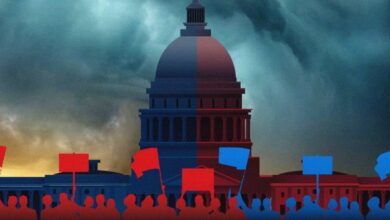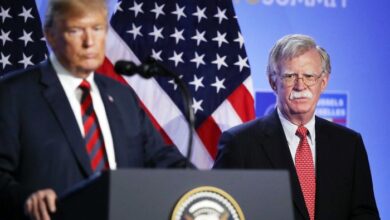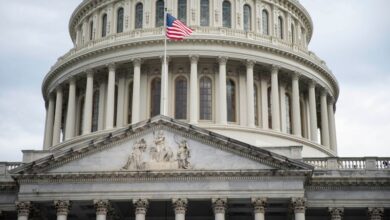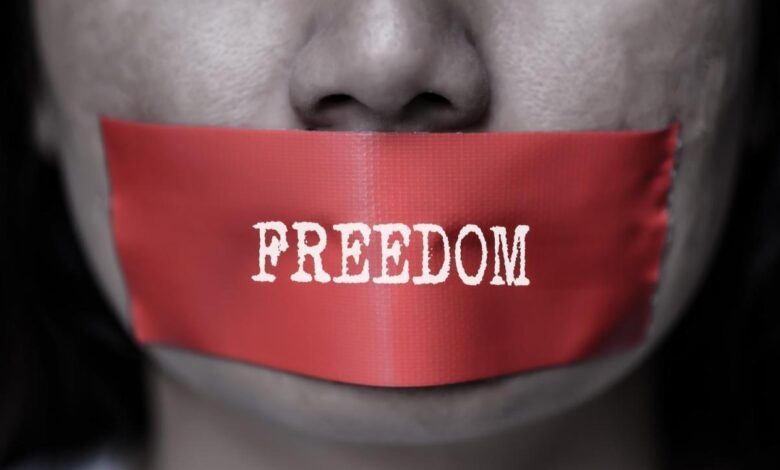
Shredding the First Amendment: A Threat to Freedom
Shredding the First Amendment, a phrase that sends shivers down the spines of anyone who values free speech, is not a hypothetical scenario. It’s a real and present danger, slowly chipping away at the very foundation of our democracy. From online censorship to restrictions on political discourse, the threats to our First Amendment rights are numerous and growing.
This blog post delves into the historical context of the First Amendment, exploring its evolution and the landmark Supreme Court cases that have shaped its interpretation. We’ll examine the modern challenges to free speech, including the role of technology and the arguments for and against limitations on expression.
Finally, we’ll discuss the potential consequences of eroding First Amendment protections and explore strategies for safeguarding this fundamental right.
Historical Context
The First Amendment to the United States Constitution is a cornerstone of American democracy, safeguarding fundamental freedoms that are essential to a free and open society. Its origins lie in the struggles for liberty and self-governance that shaped the early years of the nation.The First Amendment’s guarantee of freedom of speech, press, religion, assembly, and petition is a direct result of the experiences of the colonists under British rule.
The colonists had faced restrictions on their ability to express dissent, practice their own religions, and assemble peacefully. The First Amendment was designed to prevent such abuses of power from occurring in the new nation.
Landmark Supreme Court Cases
The Supreme Court has played a crucial role in shaping the interpretation and application of the First Amendment through a series of landmark cases. These cases have clarified the scope of protected speech, established limits on government regulation of expression, and addressed the delicate balance between individual rights and societal interests.
- In Gitlow v. New York(1925), the Court incorporated the First Amendment’s free speech protections into the Fourteenth Amendment, making them applicable to state governments. This decision expanded the reach of the First Amendment and established its importance in safeguarding individual rights from state infringement.
- Near v. Minnesota(1931) was a landmark case in the development of prior restraint doctrine. The Court struck down a state law that allowed for the suppression of newspapers deemed “malicious, scandalous, and defamatory.” This decision established a strong presumption against prior restraints on speech and reinforced the importance of a free press.
- The case of Brandenburg v. Ohio(1969) established the “imminent lawless action” test for determining when speech can be restricted. The Court held that speech can only be punished if it is directed at inciting imminent lawless action and is likely to do so.
This test provides a clear standard for balancing free speech rights with the need to protect public safety.
- Tinker v. Des Moines Independent Community School District(1969) dealt with the issue of student speech in public schools. The Court ruled that students retain their First Amendment rights while in school, but these rights are not absolute. Schools can restrict speech that “materially and substantially disrupts the work and discipline of the school.” This case established important guidelines for balancing student free speech rights with the educational mission of schools.
- New York Times Co. v. Sullivan(1964) is a cornerstone case in libel law and the protection of freedom of the press. The Court held that public officials cannot sue for libel unless they can prove that the false statement was made with “actual malice,” meaning that the publisher knew the statement was false or acted with reckless disregard for the truth.
This decision established a high standard for proving libel against public officials and protects the press from being chilled by the threat of lawsuits.
Historical Examples of Restrictions on Freedom of Speech
Throughout American history, there have been instances where freedom of speech or expression has been restricted or suppressed. These actions have often been driven by fear, prejudice, or a desire to maintain social order.
- During World War I, the Espionage Act of 1917 and the Sedition Act of 1918 were used to prosecute individuals who spoke out against the war effort. These laws criminalized speech that was deemed to be “disloyal” or “seditious,” even if it did not incite imminent lawless action.
This period saw the suppression of dissent and the silencing of critics of the war.
- The McCarthy era of the 1950s was marked by widespread fear of communist infiltration and the persecution of individuals suspected of being communists or communist sympathizers. This period saw the use of blacklists, congressional investigations, and public accusations to silence critics and suppress dissent.
The McCarthy era is a stark reminder of the dangers of unchecked political power and the chilling effect that fear can have on free speech.
- The Civil Rights Movement of the 1950s and 1960s saw widespread use of laws and tactics to restrict the freedom of speech and assembly of African Americans. Southern states used Jim Crow laws to segregate public facilities, deny voting rights, and suppress peaceful protests.
It’s chilling to see how easily our freedoms are eroded, like watching a beloved landmark crumble. The way some argue for limiting speech reminds me of the economic turmoil of the late 90s, debt and the global economic crisis of 19979899 , when seemingly stable systems collapsed under pressure.
Just as unchecked debt led to a global crisis, unchecked censorship can lead to the erosion of a fundamental right. We need to be vigilant, lest we lose our freedoms bit by bit, until only a shadow of what we once had remains.
The movement’s success was largely due to the courage of those who refused to be silenced and who fought for their rights through peaceful means.
Modern Challenges to the First Amendment
The First Amendment, a cornerstone of American democracy, guarantees the rights to free speech and expression. However, in the digital age, this fundamental right faces unprecedented challenges, requiring careful consideration and ongoing debate. The rapid evolution of technology, coupled with societal shifts, has created a complex landscape where traditional notions of free speech collide with new concerns about online censorship, hate speech, and the spread of misinformation.
It’s chilling to see how easily the First Amendment can be chipped away, even in the face of complex issues like the Middle East conflict. Understanding the historical context of this conflict, which you can find in this article , is crucial for informed debate.
But when fear and prejudice take hold, it’s easy to lose sight of the fundamental rights that allow for open dialogue and critical thinking. It’s a dangerous path, and we must be vigilant in defending our freedoms.
Online Censorship
Online censorship, the act of restricting access to information or content on the internet, has become a significant challenge to the First Amendment. While platforms like Facebook and Twitter have a right to moderate content on their own platforms, concerns arise when these decisions appear arbitrary or politically motivated.
- Content Moderation Policies:Social media companies employ algorithms and human moderators to remove content deemed harmful or offensive. These policies, often vague and subject to interpretation, can lead to the suppression of legitimate speech, particularly when it comes to controversial or minority viewpoints.
- De-platforming:The practice of removing individuals or groups from online platforms, often for violating community guidelines, has raised concerns about censorship. Critics argue that such actions can stifle dissent and limit the reach of marginalized voices.
- Shadow Banning:This refers to the practice of limiting the visibility of certain users’ content without explicitly removing it. While platforms argue that shadow banning helps to combat spam and abuse, critics see it as a form of censorship that undermines the free flow of information.
It’s frightening to see the erosion of our fundamental rights, like the freedom of speech enshrined in the First Amendment. We need to look beyond the traditional narratives and consider an alternative view of east west history to understand how these freedoms have been threatened throughout history.
By recognizing the historical patterns of oppression, we can better defend our rights against those who seek to silence dissent and dismantle the very foundations of our democracy.
Hate Speech Regulations
Hate speech, defined as speech that incites violence or hostility towards a particular group, presents a complex dilemma for the First Amendment. Balancing the right to free expression with the need to protect individuals from harassment and discrimination is a delicate task.
- Balancing Free Speech and Harm:The First Amendment does not protect speech that constitutes a true threat or incites imminent lawless action. However, the line between hateful speech and protected expression can be blurry, leading to challenges in defining and regulating hate speech.
- Online Platforms and Hate Speech:Social media platforms have taken steps to combat hate speech, but their efforts are often criticized as being insufficient or inconsistent. The issue of content moderation and hate speech regulation on online platforms is an ongoing area of debate.
- International Perspectives:Different countries have adopted varying approaches to hate speech regulation. Some nations have stricter laws that prohibit certain forms of speech, while others emphasize free speech as a fundamental right.
The Role of the Media in a Democratic Society
A free and independent press is a cornerstone of a healthy democracy. It serves as a vital watchdog, ensuring transparency and accountability in government and other institutions. A robust media landscape empowers citizens by providing access to information, fostering informed public discourse, and promoting civic engagement.
The Importance of a Free and Independent Press
A free press plays a crucial role in a democratic society by acting as a check on power, informing the public, and facilitating open debate.
- Holding Power Accountable:The media’s ability to investigate and report on government actions, corporate practices, and other areas of public interest is essential for transparency and accountability. By exposing wrongdoing and holding those in power accountable, a free press helps prevent corruption and abuse of power.
For example, investigative journalism played a key role in exposing the Watergate scandal, which ultimately led to the resignation of President Richard Nixon.
- Informing the Public:The media provides citizens with access to information about a wide range of issues, from local news to international affairs. This access to information empowers citizens to make informed decisions about their lives and their communities.
- Fostering Open Debate:A free press allows for the expression of diverse viewpoints and fosters open and informed public debate. This diversity of perspectives is crucial for a healthy democracy, as it allows for the consideration of multiple viewpoints and helps prevent the dominance of any single ideology.
Different Models of Media Ownership and Regulation
The ownership and regulation of media outlets can significantly impact media freedom and journalistic integrity. Different models exist, each with its own advantages and disadvantages.
- Public Ownership:In this model, media outlets are owned and operated by the government. While this model can ensure access to information for all citizens, it also raises concerns about government control and censorship.
- Private Ownership:This model allows for a diverse range of media outlets, each with its own editorial independence. However, it also raises concerns about the influence of wealthy individuals or corporations on media content.
- Hybrid Models:Some countries employ hybrid models that combine elements of both public and private ownership. These models can provide a balance between government oversight and media independence.
Challenges Faced by Journalists
Journalists often face significant challenges in reporting on controversial issues, including threats to their safety, legal challenges, and public pressure.
- Threats to Safety:Journalists who investigate sensitive topics or report on powerful individuals or institutions may face threats of violence, intimidation, or harassment. This can deter journalists from reporting on important issues and create a climate of fear.
- Legal Challenges:Journalists may face legal challenges, such as libel lawsuits or government censorship, that can limit their ability to report freely.
- Public Pressure:Journalists may also face public pressure, such as boycotts or social media campaigns, that can discourage them from reporting on controversial issues.
The Impact of “Shredding the First Amendment”
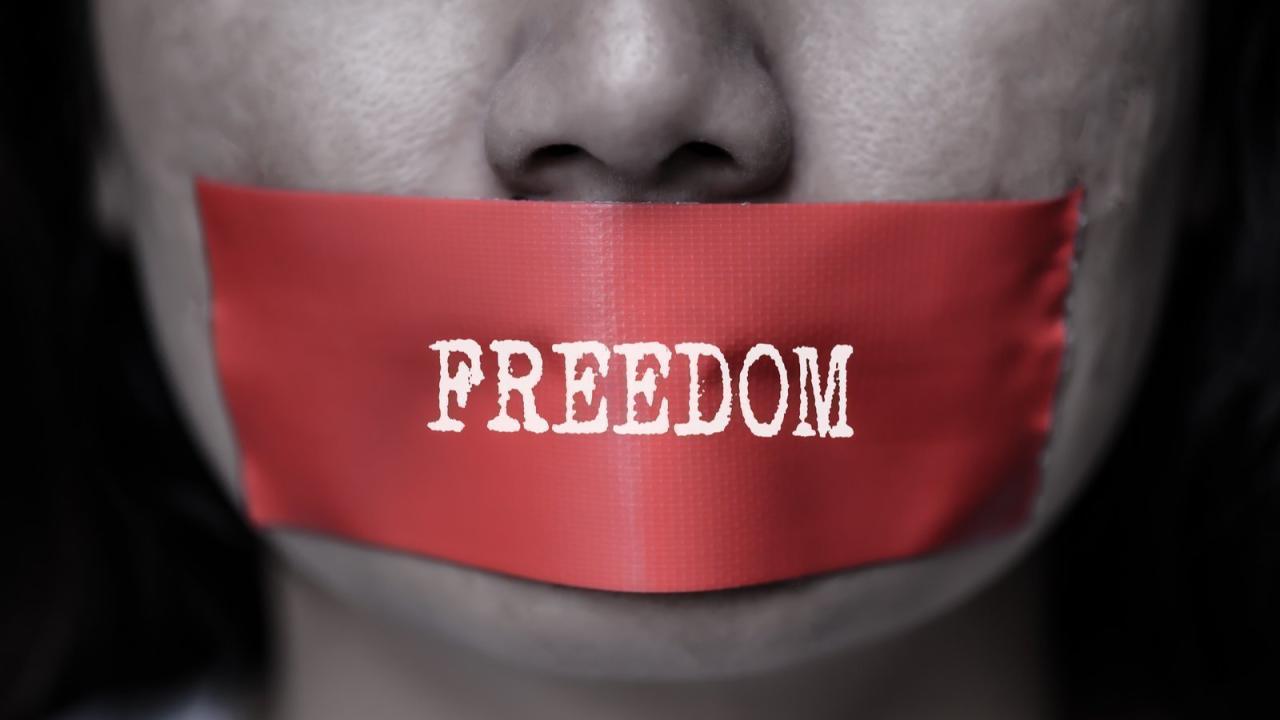
The First Amendment, a cornerstone of American democracy, guarantees fundamental freedoms, including the right to free speech, freedom of the press, freedom of assembly, and freedom of religion. However, the erosion of these protections can have profound and far-reaching consequences for individuals, society, and the very fabric of our democracy.
Suppression of Dissenting Voices
The erosion of First Amendment protections can lead to the suppression of dissenting voices, hindering the free exchange of ideas and opinions. When individuals fear expressing their views, they may choose to remain silent, leading to a chilling effect on public discourse.
This silencing of dissent can stifle innovation, creativity, and the pursuit of truth.
Erosion of Public Trust in Institutions
When governments or institutions restrict free speech, it can erode public trust in those entities. Individuals may perceive such actions as attempts to control information and suppress critical voices, leading to a loss of faith in the fairness and transparency of institutions.
This erosion of trust can undermine the legitimacy of governments and institutions, making it difficult for them to effectively govern and serve the public.
Stifling of Innovation and Creativity
The free flow of ideas is essential for innovation and creativity. When free speech is restricted, it can stifle the exchange of new ideas, leading to a decline in innovation and progress. This can have a negative impact on economic growth, scientific advancement, and cultural development.
Historical Examples of Limitations on Free Speech
Throughout history, numerous examples demonstrate the negative consequences of limitations on free speech. For instance, the Nazi regime in Germany used censorship and propaganda to suppress dissenting voices and control the flow of information. This resulted in a climate of fear and conformity, hindering the development of critical thinking and dissent.
Hypothetical Scenario: A Society with a Weakened First Amendment, Shredding the first amendment
Imagine a society where the First Amendment is significantly weakened, leading to widespread restrictions on free speech. In this scenario, individuals may be hesitant to express their views on controversial topics, fearing retribution or legal consequences. The media may be subject to censorship, limiting the public’s access to information and diverse perspectives.
This could lead to a decline in public discourse, a lack of critical thinking, and a rise in misinformation and propaganda.
Strategies for Protecting the First Amendment: Shredding The First Amendment
Protecting the First Amendment, the cornerstone of American democracy, is a continuous and multifaceted endeavor. This fundamental right ensures freedom of speech, press, assembly, religion, and the right to petition the government, forming the bedrock of our democratic society.
However, these freedoms are not absolute and are subject to ongoing challenges. The following strategies can help individuals and organizations protect and promote these vital rights.
Advocacy and Legal Action
Advocacy groups, legal organizations, and individuals play crucial roles in safeguarding First Amendment rights. These groups monitor potential threats to free speech and expression, engage in legal battles to defend individuals’ rights, and educate the public about the importance of these freedoms.
- Joining Advocacy Groups:Organizations like the American Civil Liberties Union (ACLU) and the Reporters Committee for Freedom of the Press (RCFP) actively defend First Amendment rights through legal action, advocacy, and public education. Individuals can support these groups through donations, volunteering, or becoming members.
- Legal Assistance:Legal aid organizations provide legal representation to individuals facing First Amendment violations, ensuring access to justice for those who might not otherwise afford it.
- Filing Lawsuits:Individuals can file lawsuits to challenge government actions or private entities that infringe on their First Amendment rights. Successful lawsuits establish legal precedents that protect future generations.
Educational Initiatives
Promoting public understanding and awareness of First Amendment rights is essential for their protection. Educational institutions, media outlets, and civic organizations can play a vital role in this process.
- Curriculum Development:Educational institutions can integrate First Amendment principles into their curriculum, fostering critical thinking and understanding of these rights among students.
- Public Forums and Workshops:Organizing public forums, debates, and workshops on First Amendment issues can engage the community and raise awareness about these fundamental freedoms.
- Media Coverage:Media outlets can contribute to public education by providing balanced and accurate coverage of First Amendment issues, highlighting both successes and challenges in protecting these rights.
Community Engagement
Engaging in civic discourse and participating in community initiatives are crucial for safeguarding First Amendment rights. Individuals can contribute to this effort by:
- Speaking Out:Expressing opinions and concerns about potential threats to free speech, whether through letters to the editor, public forums, or social media platforms.
- Supporting Free Speech Events:Attending and supporting events that promote free speech and expression, such as rallies, protests, and artistic performances.
- Challenging Censorship:Speaking out against censorship attempts, whether in schools, workplaces, or public spaces.

